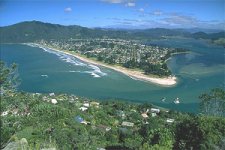Environmental Issues in New Zealand
|
New Zealand generates much of its wealth from its agricultural activities, but at what cost to the land? To be sure, much damage was done during the pioneering era, of both Maori and European settlement, when more than 85% of our lowland native forests were swept away, most of our wetlands were drained, numerous species became extinct, and much erodible land was unwisely maintained in grassland without any tree plantings to bind the soil. These problems are not entirely in the past. It is important to understand that, in many areas, the degradation of land, waters and ecosystems has not stopped, but is still continuing. Areas of native vegetation throughout the country are degenerating through neglect, waterways are becoming silted up and loaded with farm waste, pests and weeds are continuing to spread, hills are eroding, and populations of native species are becoming increasingly fragmented and threatened. In fact, New Zealand’s leading environmental problems mainly centre around agriculture. There are three main issues that need to be addressed: In short, soil, water and biodiversity resources across New Zealand’s landscape are continuing to deteriorate. The most worrying feature of this is that the deterioration is a slow, insidious process that is not readily noticeable on a day-to-day basis. It is not dramatic enough to galvanize public attention and action. But the deterioration is continuing, nevertheless, and will mean that, before we know it, we will lose many of the features of our landscape that were important to us and to our native flora and fauna. |











